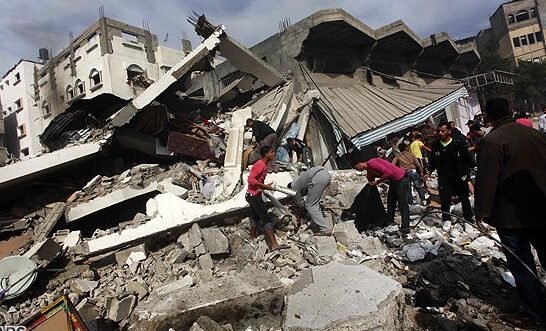Brutal Israeli ground offensive deepens Gaza’s crisis—how much more blood will spill?
Gaza descended into chaos on Wednesday as Israeli forces launched a brutal ground invasion, killing over 400 people in one of the deadliest days since the conflict began. The Israeli Defense Forces (IDF) stormed into central and southern Gaza, just hours after an intense aerial bombardment flattened entire neighborhoods and left hundreds dead.
The ceasefire, which had lasted two months, collapsed after both Israel and Hamas blamed each other for derailing hostage negotiations. Israel accused Hamas of refusing offers from international mediators, while Hamas blamed Israeli Prime Minister Benjamin Netanyahu for destroying the truce and putting hostages at risk.
The Civil Defence in Gaza reported at least 70 people killed on Wednesday alone, with deadly strikes in Beit Lahia and Al-Sabra reducing homes to rubble. In northern Gaza, an Israeli attack destroyed a funeral home, killing 24 people, while another strike in central Gaza claimed 21 lives, including six children. Aid groups warned that Gaza’s hospitals are overwhelmed, and the Israeli blockade has cut off vital supplies, pushing the region toward famine.
Embed from Getty ImagesThe Netzarim Corridor, once a demilitarized buffer zone under the ceasefire, has now become a battleground. Israeli troops re-entered the area, claiming Hamas was using it to move supplies and fighters. Israeli Defence Minister Israel Katz warned that Gaza’s residents would “pay the full price” until Hamas surrendered.
International outrage intensified after a UN guesthouse in Deir al-Balah was hit, killing one aid worker and injuring five others. The UN accused Israel of targeting humanitarian facilities, a charge the IDF denied. Weapons analysts reviewing the scene suggested the damage was caused by an Israeli tank projectile. A senior UN official called it “no accident,” saying, “When you strike a known UN facility multiple times, you’re sending a message.”
Meanwhile, Israel remains focused on securing the release of hostages taken by Hamas during the October 7 attacks. So far, only eight hostages have been returned alive, with most others released through negotiated exchanges—a strategy Israel now seems unwilling to pursue further.
With Gaza’s death toll climbing and humanitarian conditions worsening, the conflict appears to be spiraling toward an even deadlier phase. As families search for survivors and children scream for missing parents, the world watches in horror. The question remains—how much more blood will spill before this nightmare ends?
